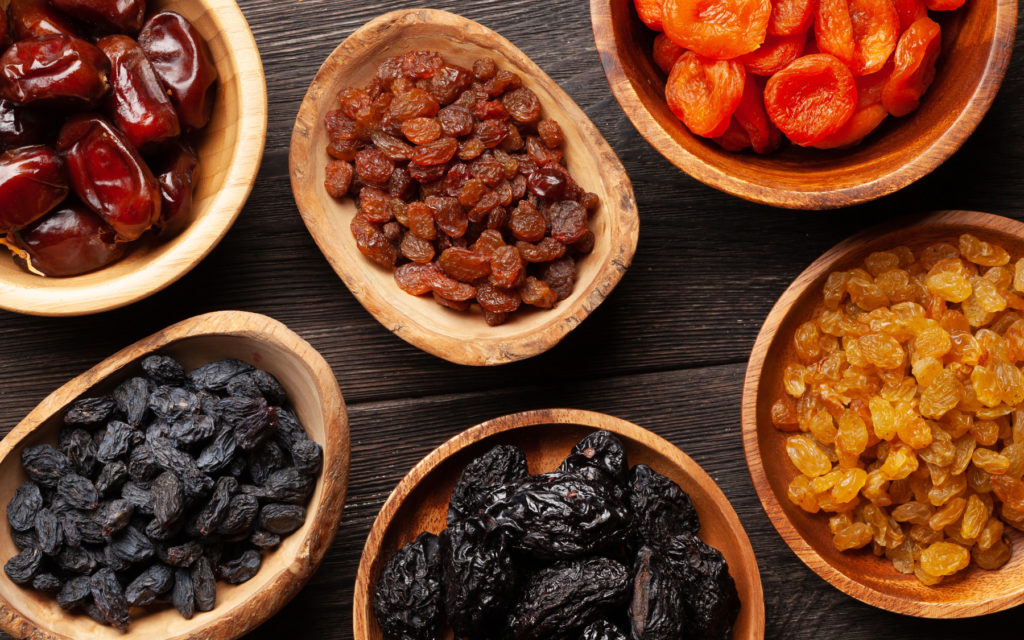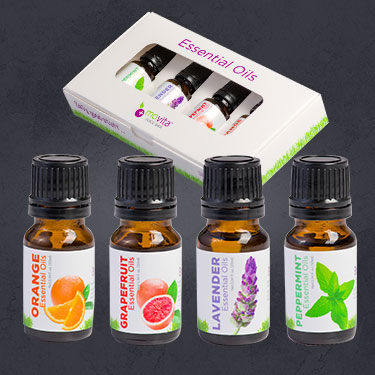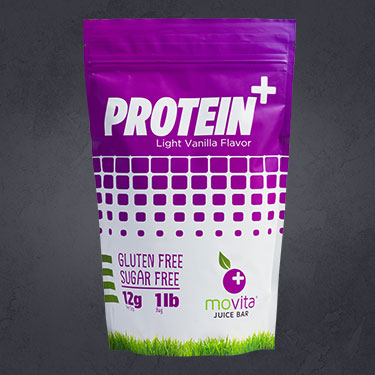
Drying fresh fruit in the sun is one of the oldest methods of preserving food. Many people continue to dry fruit at home today. Fruit can be dried naturally by exposure to sunshine and air, or it can be processed commercially. It has been reported people who routinely eat dried fruit have a higher intake of several vitamins and minerals. Dried fruit is a good source of fiber, potassium, and iron, and though some antioxidants (such as vitamin C) are lost during the drying process, dried fruit manages to retain a high overall antioxidant content.
One serving of dried fruit is smaller than a serving of fresh fruit because the serving of dried fruit contains far less water.
Imagine a one-cup serving of grapes, which fits into two cupped hands. One serving of dried grapes (raisins) is ¼ cup, which is less than the amount you can hold in one cupped hand. It’s easy to eat large portions of dried fruit without realizing it, and the calories add up quickly. One cup of fresh grapes contains 60 calories, compared to the 120 calories in 1/4 cup raisins. So, when you do eat dried fruit, do it in moderation.
Dried fruits are naturally sweet, but some types of dried fruit contain added sugar or corn syrup. Read the list of ingredients to avoid these added sweeteners. To maintain fresh color, sulfites are added to fruit that easily turns brown when exposed to the air, such as apples and pineapple. So keep an eye out for that too.
Use these four tips to include dried fruit in your daily food choices:
- Add ¼ cup chopped dried apples to your morning bowl of oatmeal for added fiber and natural sweetness.
- Enjoy dried plums and nuts for a mid-morning snack that curbs your appetite and helps keep your blood sugar levels even.
- Dried cherries contain good amounts of antioxidants that help promote health. Make a healthy after-school parfait to keep kids’ energy levels high. Just layer plain nonfat Greek yogurt, dried cherries, and whole-grain cereal in a fun glass.
- Liven up a vegetable salad with dried blueberries. There’s no significant difference in the antioxidant content of dried and fresh blueberries, and you can keep dried blueberries in the cupboard for a splash of color and nutrition all year.
DISCLAIMER: These statements have not been evaluated by the FDA. The information is for informational purposes and is not intended to treat, diagnose or cure any illness. Consult a physician before taking any action.
Want to contribute great content?
We are looking for contributors provide our readers with great healthy content to encourage positive living. If you're interested in becoming a contributor pease email us at blog@movitajuicebar.com



